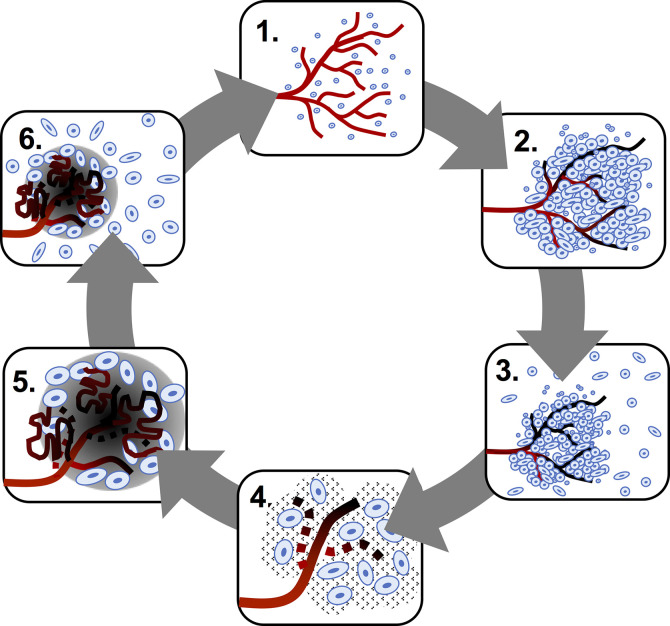Figure 1.
Hypoxia-neovascularization cycle in glioblastoma. The steps below are as follows: 1. Glioma cells consume oxygen provided by the functional vasculature. 2. Endothelial injury, prothrombotic factors and increased mechanical pressure in regions of high glioma cell density induce vaso-occlusion and necrosis. 3. Perivascular glioma cells switch to a “go” phenotype based on presence of hypoxia. 4. Pseudopalisading glioma cells secrete pro-angiogenic factors. 5. Pro-angiogenic factors stimulate the formation of aberrant, highly permeable neovasculature, which results in more hypoxia and accelerated progression. 6. Pseudopalisading cells migrate to a new vasculature where the cycle begins anew.

